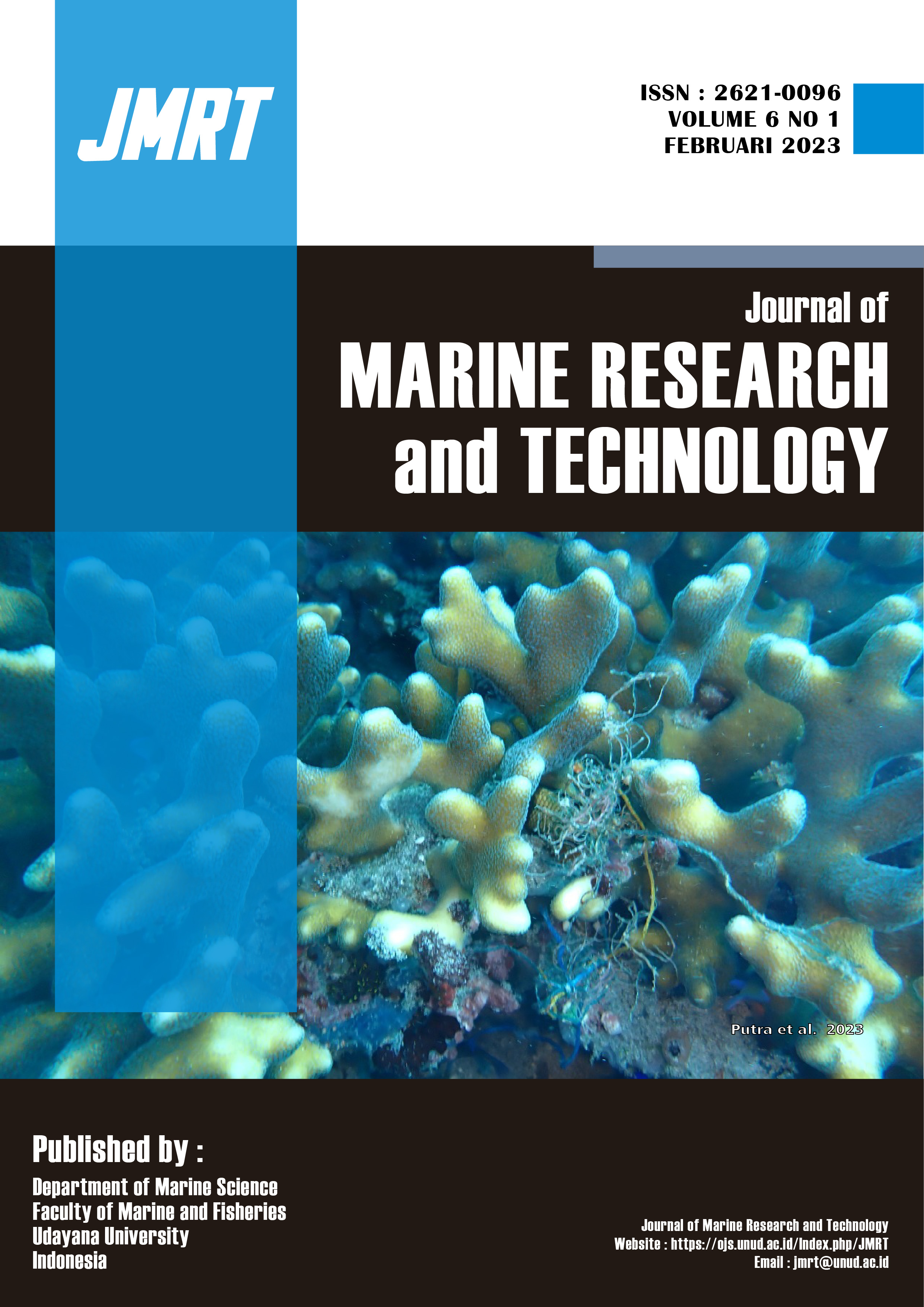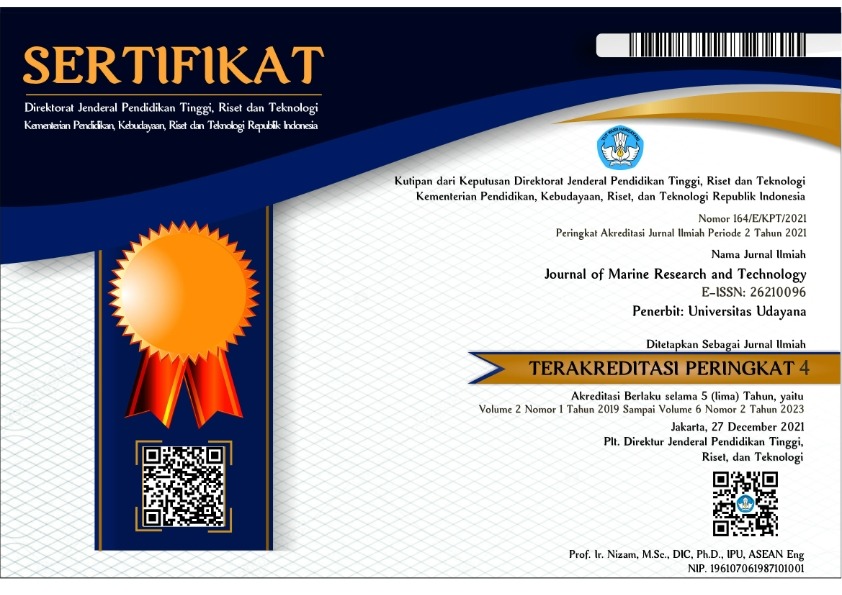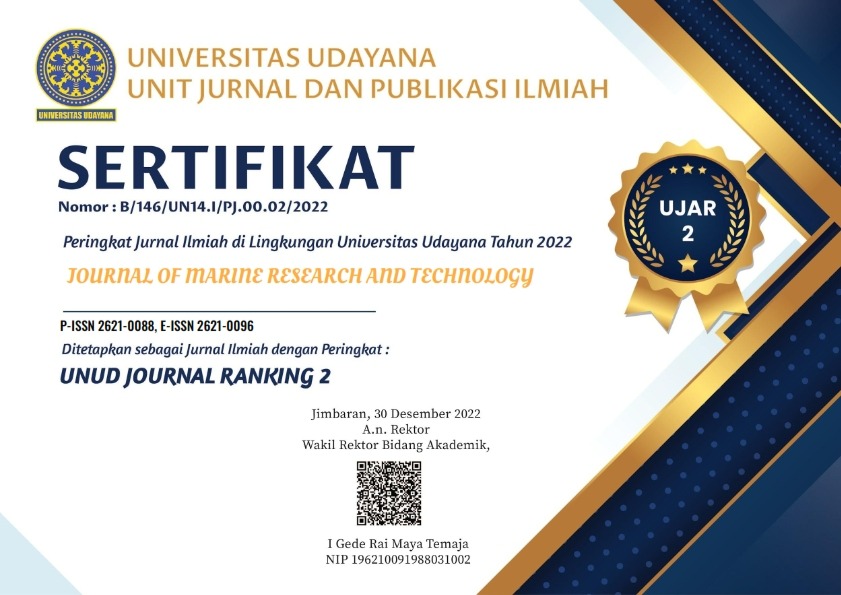Tingkat Kesejahteraan Nelayan Tradisional di Pantai Bias Lantang Desa Seraya Timur, Kabupaten Karangasem, Bali
Walfare; NTN; Traditional Fishermen; Bias Lantang Beach
Abstract
Most of the people living on the coast of Bias Lantang Beach, East Seraya Village, work as fishermen with the main catch being of tongkol. This research conducted to gain an insight about the welfare of traditional fishermen and exchange rate of fishermen (NTN) Coast of Bias Lantang Seraya Timur, Karangasem, Bali using BPS indicator and NTN. The population in this study research are all traditional fishermen that are on the Coast of Bias Lantang Seraya Timur. Sampling of these studies is done using calculations from Slovin analysis. As for the method used in this research is case study method with a descriptive analysis, in which data collection is done using a questionnaire and presented in the form of a chart. The results from the prepared questionnaire's data indicate the level of traditional fishermen's welfare and the NTN that was calculated using a NTN. According to BPS, as known traditional fishermen on Bias Lantang Beach Seraya Timur Village had a high score of welfare rates (high range of score 15-21) with total score 18. Whereas based on the NTN it is known that the value of the traditional fishermen on Bias Lantang Beach Seraya Timur Village is 0.95 while the results of NTN<1 showing that traditional fishermen tend to possess a low welfare rated. As a result, there is a difference between the traditional welfare of fishermen on the Bias Lantang Seraya Timur Village used the BPS indicator and the use of NTN. This is because of the welfare of traditional fishermen using BPS indicator methods such as income, expenses, education, health, place, facilities, and status of ownership, wherefrom the seven indicators four indicators had a high score of indicator (score 3). Whereas NTN consists of two indicators (income and expenses), where the expenses of fishermen are bigger than the income.
Downloads
Copyright Notice
The copyright to this article is transferred to Journal of Marine Research and Technology (JMRT). The copyright transfer covers the exclusive right and license to reproduce, publish, distribute and archive the article in all forms and media of expression now known or developed in the future, including reprints, translations, photographic reproductions, microform, electronic form (offline, online) or any other reproductions of similar nature.






